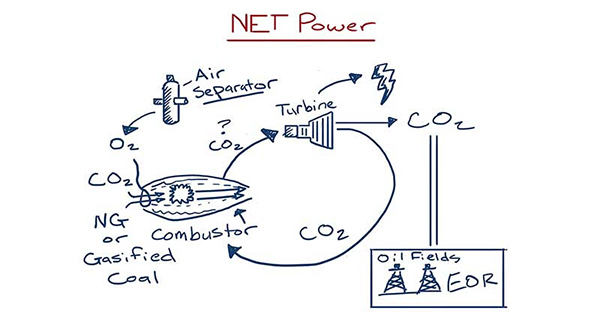
THE MANY USES OF CAPTURED CARBON
ClearPath and the Carbon Utilization Research Council, with support from the mine workers and other unions, came out last year with a study (using modeling from NERA Economic Consulting and Advanced Resources International) forecasting some really big benefits that underscore the economic promise of using captured carbon from power plants for enhanced oil recovery: up to 780,000 new jobs and $190 billion in added GDP by 2040.

But while EOR is a major means of creating an economic case for capturing carbon, it is increasingly not the only means.
An analysis by Carbon180 found a total available market in the U.S. for so-called carbontech of $1.07 trillion, and a global TAM of $5.91 trillion. Their analysis indicated by far the largest segment of the market consisting of fuels, followed by building materials and plastics.
Earlier this month, the Wyoming Infrastructure Authority and the Jeremy and Hannelore Grantham Environmental Trust joined Carbon180’s Carbontech Labs, a public-private partnership worth up to $9.75 million to accelerate startups that aim to turning waste carbon into valuable products.
An interactive map created by Third Way illustrates dozens of projects just in the U.S. that convert carbon into other products, from algae biofuel in Florida to concrete in Washington State.
Canadian-based Carbon Cure has many projects scattered from California to Georgia to convert carbon into concrete. The company so far has converted nearly 62 million pounds of recycled CO2 into 2 million cubic yards of concrete (amounting to more than 307,000 truckloads).
New Zealand-based LanzaTech, which now houses its global headquarters near Chicago, converts carbon to ethanol, including for use in jet fuel. Virgin Atlantic flew the first commercial flight last October using carbon-capture jet fuel produced by LanzaTech. This year it was named by Fast Company as the most innovative energy company and the 27th most innovative company overall in its annual list.

This is on top of public and private-sector efforts to implement next-generation technologies and infrastructure to capture and transport carbon for storage and utilization.
The Senate Environment and Public Works Committee by voice vote has forwarded to the full Senate the bipartisan USE IT Act (S. 383), which would support carbon capture technologies through public-private partnerships, carbon dioxide pipeline and other infrastructure improvements and R&D.
On the private side, NET Power, a 50-MW demonstration plant near Houston, is using the “Allam Cycle,” a revolutionary technology that could capture all carbon dioxide from natural gas generation. The plant achieved “first fire” in the spring of 2018 and may be the catalyst for large-scale carbon capture commercialization for new natural gas facilities. If successful, it will be a lower-cost and cleaner approach to making electricity with natural gas.
RELATED EVENT
The Carbon Utilization Research Council, Global CCS Institute and Carbon Capture Coalition host a “Carbon Lunches” briefing at the U.S. Capitol Visitor Center TODAY that will provide an intro to carbon capture, use and storage and “how this suite of technologies can deliver steep emissions reductions alongside other clean and renewable sources of energy.” It will feature a keynote from Bipartisan Policy Center President Jason Grumet and thoughts from Electric Power Research Institute Director Neva Espinoza on how carbon capture impacts the power sector and Cogentiv Solutions Principal Ron Munson on reducing industrial-sector emissions.
This is all going to be increasingly necessary as natural gas will likely continue its boom globally.
Speaking of which….
|